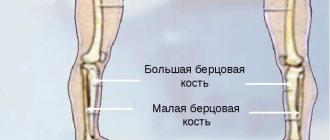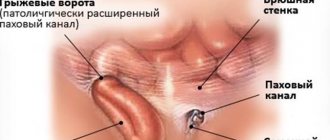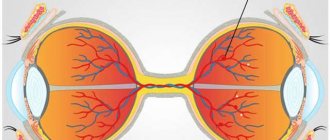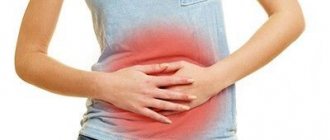Published: 10/05/2021 13:40:00 Updated: 10/05/2021
Appendicitis is an acute inflammation of the cecum, affecting its vermiform appendix (appendix). This anatomical organ is not a rudiment, as previously thought. It has an immune function and is involved in the formation of intestinal microbiota, so the recent “fashion” for preventive appendectomy had no real clinical basis. However, if the appendix is inflamed, it must be removed surgically.
The disease is infectious in origin, develops quickly and requires emergency surgical care. Acute appendicitis is in the group of 7 nosological forms, combined into the “Acute abdomen” symptom complex, occupying a share of 27.7% in its structure [1]. The incidence of acute appendicitis in Europe is 12 cases per 100 people, more than 220,000 operations are performed annually in Russia, and the mortality rate is 0.13% [2].
Appendicitis can happen to a person of any age and gender, previously predominantly in those aged 10 to 19 years, but in recent years the incidence of appendicitis has increased in the age group from 30 to 69 years [1].
Acute appendicitis can be catarrhal (simple, without complications), gangrenous, phlegmonous, with empyema of the appendix, primary or secondary.
Symptoms of appendicitis
Classic signs of acute appendicitis:
- vomiting and nausea, mainly in the first hours of illness;
- stomach ache;
- dry mouth, coated tongue;
- lack of appetite;
- adopting the fetal position (curling up on the sore side);
- lag of the right side of the abdomen when breathing;
- pain in the right lower abdomen when lifting a straight leg up from a position on the left side;
- pain when pressing between the navel and the ilium;
- pain when releasing the palm after pressing on the abdomen.
The main symptom of appendicitis is pain in the right lower abdomen, suddenly appearing, aching, constant, at first of uncertain localization, but then concentrated near the navel on the right.
Which side of appendicitis gives pain depends on the anatomical features of the location of the appendix. This could be the following localization:
- down to the right of the navel;
- right hypochondrium;
- closer to the midline to the right of the navel;
- in the lower right part of the abdomen, closer to the bladder;
- sometimes the pain radiates to the right hip joint and right thigh;
- Sometimes with appendicitis it hurts to the left of the navel or in the stomach area.
With appendicitis in pregnant women in the later stages, the pain is localized in the right side or right hypochondrium, since the pregnant uterus displaces all organs.
The greatest problem is represented by atypical forms of appendicitis. About a third of cases occur without traditional signs of appendicitis, masquerading as other diseases, which is especially important for women of fertile age. Urinary disorders, gallbladder diseases, diarrhea, very high body temperature, and gynecological diseases may occur.
Complications of acute appendicitis:
- rupture of the appendix;
- appendicular infiltrate or abscess (suppuration of the appendix);
- retroperitoneal phlegmon (suppuration in the retroperitoneal space);
- peritonitis (inflammation of the peritoneum);
- pylephlebitis (inflammation of the veins of the cecum);
- sepsis (blood poisoning).
Children and elderly people with chronic diseases of the cardiovascular system, diabetes mellitus, and neoplasms die from appendicitis.
Lack of treatment also leads to death; appendicitis cannot go away on its own. Delayed presentation also increases the risk of death. In St. Petersburg, for example, only 67% of patients with appendicitis see a doctor on the first day [1].
Allowed physical activity
The first movements after the operation can be made only after 8 hours. You can fully start walking only three days after the removal surgery. Lying down for a long time is strictly prohibited. Even in the hospital, an exercise therapy complex is prescribed together with a rehabilitation doctor. For the first 1.5-2 months, all physical activity should be limited exclusively to walks and exercises prescribed by a specialist. It is necessary to completely avoid carrying heavy bags and objects. Many patients are concerned about the question: how long after surgery can they resume sexual activity? It is not recommended to rush in any case. First of all, the stitches must heal. But in addition to the external ones, there are also internal ones, which take a little longer to overgrow. Their rupture can lead to the formation of hernias. If the course of appendicitis is favorable, sexual activity is resumed after 10-14 days.
Appendicitis in children
The highest incidence occurs between the ages of 9 and 12 years, and in general, acute appendicitis occurs in 3-6 out of 1000 children [3].
Appendicitis in children over 3 years of age occurs almost the same as in adults. Young patients are characterized by:
- long-term localization of pain in the epigastrium, then throughout all parts of the abdomen;
- constipation or repeated diarrhea;
- repeated vomiting;
- restlessness, crying, lack of appetite;
- fever up to 39 °C;
- slight bloating, constant tension in the muscles of the abdominal wall.
In children, especially in the first three years of life, inflammation develops faster and complications are more frequent.
Appendicitis - a “chameleon” disease
Acute appendicitis is one of the most common abdominal diseases requiring surgical treatment. At the Morozov Children's Hospital, about 600 appendectomies are performed annually - operations to remove the appendix of the cecum. In almost 10% of cases, the disease has a complicated form (peritonitis, periappendiceal infiltrate and abscess).
As a rule, complications arise due to untimely seeking of specialized medical care, because the symptoms of appendicitis can be disguised as a number of other diseases. The head of the surgical department of the Morozov Children's Hospital, coloproctologist, pediatric surgeon of the highest category, candidate of medical sciences, holder of the status “Moscow Doctor” Mikhail Kozlov told how to recognize the disease in time, which treatment methods are most effective.
How often are children diagnosed with acute appendicitis?
Acute appendicitis is an acute inflammation of the appendix of the cecum. The overall incidence ranges from 3 to 6 per 1,000 children. Girls and boys get sick equally often. Can occur at any age, including newborns. Up to 3 years, the incidence does not exceed 8%. The peak incidence occurs in children aged 9–12 years. Moreover, in children, appendicitis develops faster, and destructive changes in the appendix, leading to appendiceal peritonitis, occur much more often than in adults.
Why does the disease occur?
Acute appendicitis is an enterogenous autoinfection. The disease is caused by its own opportunistic microbial flora - a group of microorganisms that are constantly present on the mucous membranes and in the human intestines, peacefully coexisting with the body. Under unfavorable conditions, for example, with weakened immunity or a viral infection, the number of opportunistic microbes reaches a concentration that causes the development of the disease. Inflammation occurs in the appendix. The lumen of the appendix swells and the mucous secretion, having no exit from the appendix, accumulates and becomes infected.
How does the disease manifest in children? What should parents pay attention to?
The main symptoms of the disease are pain in the abdomen and fever. But the clinical picture of appendicitis can be varied. Depending on the location of the appendix, the severity and nature of pain can vary significantly. If the appendix has a special localization, which happens in approximately half of the cases, the clinical manifestations of the disease are atypical. For example, if the appendix is located deep in the pelvis, then there may be no pain when palpating the abdomen. In this case, it is necessary to pay attention to the nature of the stool, the urge to defecate, and the frequency of urination. This location of the appendix in girls during puberty can simulate inflammation of the appendages.
If the process is located at the top under the liver, then when palpating the abdomen through the upper abdominal wall, the pain syndrome will also not be expressed. If appendicitis imitates renal colic, the patient will complain of lower back pain. In the case where the appendix is located medially in the center of the abdomen, the child will feel severe pain in the navel. If the appendage is located on the rectum, the patient may complain of frequent bowel movements.
Difficulties in diagnosing the disease at an early stage are also due to the fact that symptoms characteristic of acute appendicitis can be observed in many other diseases. For example, ARVI often occurs with abdominal syndrome. Only a surgeon can reliably determine the disease, taking into account the examination of the patient and research. In some cases, dynamic observation is recommended.
What types of diagnostics are the most informative?
Most often, an examination by a surgeon and a general blood test are sufficient to confirm the diagnosis. If the clinical picture is unclear, an ultrasound of the abdominal organs is recommended. Expert class ultrasound machines, which the Morozov Hospital is equipped with, allow you to accurately visualize tissue and differentiate the appendix. Also, auxiliary types of diagnostics are of great importance when diagnosing newborns and children under one year old. We operate on 10-15 children with acute appendicitis per year.
How is appendicitis treated?
Treatment of appendicitis involves removal of the appendix of the cecum. In the last few years, as a rule, only laparoscopic operations have been performed. We have accumulated vast experience in performing minimally invasive interventions for this pathology - back in the Izmailovskaya Hospital we were one of the first to begin performing low-traumatic appendectomies. With this operation, access is made through small punctures in the anterior abdominal cavity. For typically located uncomplicated appendicitis, the operation lasts about 15-20 minutes. The child recovers quickly and is discharged from the hospital within 2-3 days.
What are the dangers of delaying seeking medical help?
After a day or two from the onset of the disease, inflammation from the appendix of the cecum begins to spread to the surrounding tissues: the ureter, appendages, bladder, rectum. Appendicitis is complicated by peritonitis. If the child is admitted 10 days or more from the moment of illness, the appendix fragments and we detect diffuse fecal peritonitis. This is a very serious condition in which, in extremely rare cases, the child may need to undergo abdominal surgery, with the establishment of an ostomy for some time. Repeated sanitation is carried out only after complete cleansing and elimination of the inflammatory process.
Is it possible to remove the appendix for prophylactic purposes?
Surgical intervention in the abdominal cavity without medical indications is unacceptable.
Diagnosis of appendicitis
- First of all, a consultation with a surgeon is required in the first hour of hospitalization. Special diagnostic scales are used (AAS, Alvarado, RIPASA).
- If you have appendicitis in women, you need to consult a gynecologist.
- For dysuria, consult a urologist.
- Ultrasound of the abdominal cavity.
- CT scan of the abdominal cavity (pregnant women with appendicitis undergo ultrasound or MRI instead of CT).
- Diagnostic laparoscopy is a minimally invasive intervention in which the abdominal cavity is examined through a small incision with a laparoscope. Having detected signs of appendicitis, they proceed to laparoscopic appendectomy.
Memo for parents
After removal of the appendix and discharge from the hospital, it is recommended:
- For 7-10 days, stay at home (do not attend kindergarten or school);
- be sure to see a surgeon at your local clinic;
- measure body temperature for 4-5 days (to track the possible onset of inflammation);
- monitor nutrition: do not overfeed, give the child light foods (vegetable soups, thin cereals) that do not burden digestion;
- if the surgery was performed using a traditional incision, you will need to ensure that the child does not lift heavy objects in the first month after the operation;
- exemption from physical education after abdominal surgery can be extended for 2-3 months;
- if laparoscopic surgery was performed, then physical restrictions may be minimal (no more than 1 month), since small wounds heal much faster.
More useful materials about children's health can be found in our channel on Yandex.Zen.
↓ expand ↓
Tests for appendicitis
- General clinical blood test (shows signs of inflammation in the form of increased ESR, C-reactive protein, leukocytosis, neutrophilia).
- General urine test (for differential diagnosis).
- Determination of alpha-amylase in urine (including pancreatic) - this enzyme allows you to identify inflammation of the abdominal organs.
- Culture of abdominal exudate for sensitivity to antibiotics.
- Histological examination of the appendix.
The material for the last two studies is taken during the operation.
What is an appendectomy?
Appendectomy is a surgical operation to remove the appendix.
The appendix is a vermiform appendage that is an appendage of the cecum. It is believed that the appendix stimulates the immune system and improves the body's defense resources. The appendix is a cylindrical organ, hollow inside and without a through passage. The average length of the appendix is 8–10 cm. Appendicitis is a disease associated with inflammation of the appendix. It can occur in acute or chronic form. In chronic appendicitis, appendectomy is performed routinely. An acute form of inflammation of the appendix requires timely surgical intervention.
Treatment of appendicitis
In the vast majority of cases, acute appendicitis requires surgery.
Only with appendiceal infiltrate and sometimes during pregnancy do they begin with conservative therapy, that is, intravenous antibiotics (amoxiclav or cefotaxime with metronidazole, tigecycline, ertapenem) for 2 days. Before the operation, medication preparation is carried out (water and electrolyte disturbances are eliminated, antibiotic therapy is administered, intoxication and pain are relieved, and thrombosis is prevented).
Removal of appendicitis - appendectomy - is performed as an abdominal or laparoscopic operation.
The risk of blood clots increases with:
- heavy weight;
- over 50 years of age;
- oncological diseases;
- history of heart attack and stroke;
- varicose veins;
- SLE and erythremia;
- postpartum period;
- injuries;
- taking hormonal contraceptives.
The operation is performed under general anesthesia or conduction anesthesia.
In case of a complicated course, antibiotics are also prescribed in the postoperative period; in case of catarrhal appendicitis, this is not required. On the first day, only liquid pureed food is given. The patient is discharged from the hospital on the 3-4th day, and the sutures are removed on the 5-8th day.
Postoperative diet
The diet after appendicitis must be followed for at least 14 days. Eating is completely avoided the day before and the day after surgery. From liquids you can drink water or kefir 0% fat. All patients who are hospitalized are prescribed a fractional diet. You can eat 5-6 times a day, the portion size should not be large. It is better to choose products that will not cause a feeling of heaviness and bloating. What can be consumed:
- Porridge with water;
— Liquid potato, carrot or zucchini puree; - Rice broth; — Kefir or yogurt with 0% fat content; - Boiled and pureed chicken meat; - Chicken bouillon; - Kissel. After 3-4 days, it is recommended to add black bread with bran and baked apples. You can start eating puree soups, boiled meat and fish. Gradually, the list of permitted products is expanding and returning to the pre-operative one. What should not be consumed at all:
- Large amounts of salt; — Hot herbs and spices; — Peas, beans and other legumes; — Smoked meats; - Bakery products. All these products can irritate the gastric mucosa and can lead to increased gas formation.
Recovery after appendectomy
With uncomplicated appendicitis, recovery occurs quickly; complications require longer hospitalization and a longer period of postoperative rehabilitation.
Factors contributing to early recovery: early diagnosis and timely surgery, absence of concomitant diseases, young age, absence of complications.
Risk factors: late hospitalization, obesity, elderly and senile age, peritonitis, sepsis, multiple concomitant diseases.
Within a month after removal of appendicitis you should:
- limit physical activity, especially stress on the abdominal muscles;
- follow a diet that excludes vegetables, fruits, essential oils, smoked meats, animal fats, fried, spicy foods, foods rich in purines and cholesterol (red meat, lard, jelly, strong broths, packaged soups, smoked meats, fatty fish, legumes, canned food) , raspberries, figs, grapes, eggs, cottage cheese, butter, margarine, fatty dairy products.
With the modern level of development of medicine, appendicitis is treatable, but much depends on timely access to a doctor and correct behavior after surgery.
Rehabilitation after surgery
The minimum rehabilitation time after surgery is 2 months. But this is not the maximum period. The patient’s condition, his age, the presence of complications and concomitant diseases will also affect the speed of recovery. Already in the hospital itself, the process of postoperative rehabilitation begins. The first thing people pay attention to is the process of recovery from anesthesia.
To prevent vomit from entering the respiratory tract, the patient is turned on his healthy side.
Antibiotics and painkillers are also prescribed. To restore blood lost during the operation, IVs with saline solution may be prescribed. While patients are in the hospital, they are checked daily for: • Body temperature; • Arterial pressure; • Urination and defecation in order to control their recovery; • Condition of the wound and sutures; • Are there any development of postoperative complications. In the future, the patient is usually sent to a sanatorium and stays there for at least 21 days under the close supervision of a therapist and gastroenterologist. The main procedures for healing and bringing the body back to normal are: physiotherapy and diet. We'll talk about the latter in the next paragraph. Physiotherapy includes the main course - mud therapy with silt sulfide mud. There are many regions in Russia where they use it, but most often they go to Kislovodsk, Essentuki and Pyatigorsk to recover. These cities are famous as gastro-resorts and are loved by tourists not only from our country, but also from all over the world. In the Caucasus, rehabilitation with the mud of Lake Tambukan is an integral part of such treatment. are used to carry out a course of procedures .
The methods of their use are different, but most often they are applied to the stomach, insulated and give the applicators the opportunity to heal the desired area of the body. Such medical products are also sold in pharmacies with or without a prescription, but with the consultation of a doctor.
Bibliography
- Barsukova, I.M. Acute appendicitis: history and modern organization of medical care// I.M. Barsukova, M.V. Gavshchuk, A.P. Krivov. - text: direct // Scientific notes of St. Petersburg State Medical University named after. I. P. Pavlova, 2021.- No. 3 – P. 43-49, DOI: 10.24884/1607-4181-2018-25-3-43-49.
- Clinical guidelines “Acute appendicitis in adults”, 2021, Developers: All-Russian public association “Russian Society of Surgeons”, All-Russian public organization “Russian Society of Endoscopic Surgeons”. - Text: electronic. - URL: (access date: 09/29/2021).
- Draft clinical guidelines “Acute appendicitis in children”, 2016. Developer: Russian Association of Pediatric Surgeons, -Text: electronic.- URL: (access date: 09.29.2021).
Author:
Pugonina Tatyana Alekseevna, Therapist
How to avoid adhesions
Adhesions - fusion of tissues, for example, intestinal rings, which were to one degree or another affected during surgery - begin to form almost immediately. Fortunately, they occur quite rarely in children, but are not excluded. The main method of dealing with such a complication is movement. That is why, within a few hours after a simple surgical intervention, the baby can move. Those who have not yet learned to walk are allowed to turn over on their tummy, and those who have mastered the skill are allowed to walk around the ward. In another day, the doctor will show mom several massage and gymnastics techniques that will reduce the risk of adhesions. The complex must be performed daily until the doctor cancels it. If the operation was complicated and the baby was given a drainage, the rules change.








